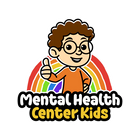In support of National Bullying Prevention Awareness Month in October, I want to offer parents thoughts and support on the topic of bullying.
Bullying is a serious concern and it affects about 1 in 5 high school students, according to the CDC. Some of these students are being bullied in school, while others are being bullied electronically (commonly known as cyberbullying).
What Does Bullying Look Like?
Before we discuss interventions, it’s important that we recognize the various forms that bullying can take.
Bullying doesn’t just involve inflicting physical harm, such as hitting, pushing, or damaging one’s personal belongings. It can also include name-calling, excluding the person from a group, or spreading rumors about them.
Bullying is Unjustifiable and Affects Mental Health
Getting bullied can be deeply traumatic for a child. Research shows that it can make victims feel insecure, unaccepted, and isolated. Children might stay away from social opportunities or extracurricular activities to avoid further embarrassment.
Moreover, the stress caused by bullying can lead to symptoms like headaches, sleep disorders, and chronic pain.
National Bullying Prevention Awareness Month - A Good Time to Talk to Your Child About Bullying
As a child therapist, I believe in positive and honest conversations between a parent and child. Before bullying happens, it’s important to talk to them about its signs, so that if it does happen, your child will feel comfortable sharing their concern with you.
In our How To Cope With Bullying handout, we stress the importance of never keeping bullying a secret. Some children are afraid that speaking up will make things worse or that they will be blamed.
You can help create a safe environment for them and other kids by reaching out to their teacher, counselor, or principal to report bullying if it happens. If necessary, work with the school to develop an anti-bullying action plan.
Remember that bullying is preventable, and can be addressed with persistent intervention and collaboration between kids, parents, and school staff. It doesn’t always stop after the first report, so continued reporting is very important.
For more resources to support a child or teen with bullying check out StopBullying.gov.
*This article was originally published in our email newsletter on October 15, 2024.





















































